Kuala Lumpur is one of those cities that surprises you as soon as you arrive. Between modern skyscrapers that seem to touch the sky, colorful temples tucked away in alleyways, and markets filled with the aroma of spices, the Malaysian capital combines tradition and modernity in a unique way. It's a place where cultural diversity is evident not only in the architecture and food, but also in the daily lives of its inhabitants.
Visiting Kuala Lumpur means immersing yourself in a melting pot of Malay, Chinese, and Indian influences, with a vibrant urban rhythm and at the same time offering tranquility. From the iconic Petronas Towers to the Hindu temples of Batu Caves or the street food of Jalan Alor, the city offers a wide variety of experiences that make it a must-see on any trip to Southeast Asia.
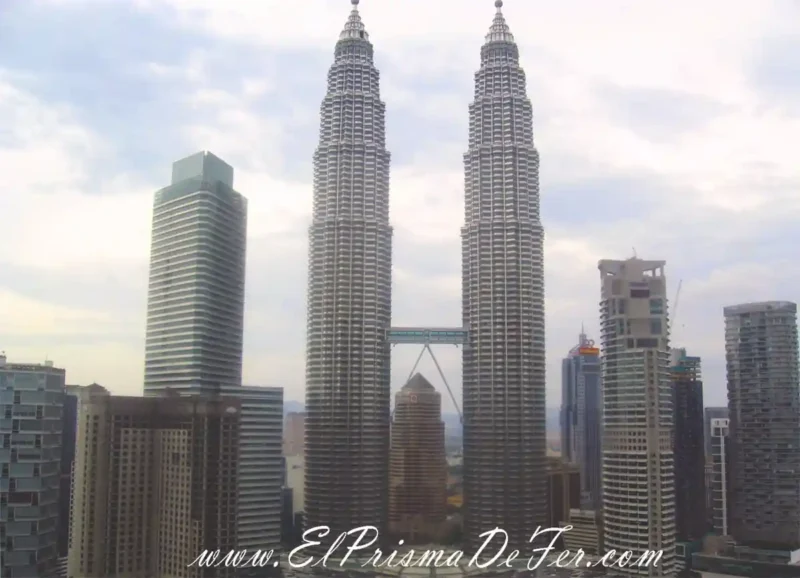
Table of Contents
How to get to Kuala Lumpur
By plane
The easiest and most common way to get to Kuala Lumpur is by plane. Kuala Lumpur International Airport (KLIA) is one of the busiest in Southeast Asia and receives flights from all over the world, as well as very affordable regional connections thanks to low-cost airlines such as AirAsia and Scoot. From the airport, the city center is easily accessible by train (KLIA Express), bus, or taxi.
By train from Thailand
It is also possible to arrive by land from Thailand, which can be a great travel experience.
In my case, I departed from Koh Lanta and traveled to Hat Yai (about 5 hours), the last major Thai city before the border. From there, trains depart daily to Malaysia. I took one that left at night for Kuala Lumpur, and it took about 8.5 hours.
It's a long but comfortable ride, and it allows you to see the scenery as you cross southern Thailand and enter Malaysia, which gives the trip a more adventurous feel.
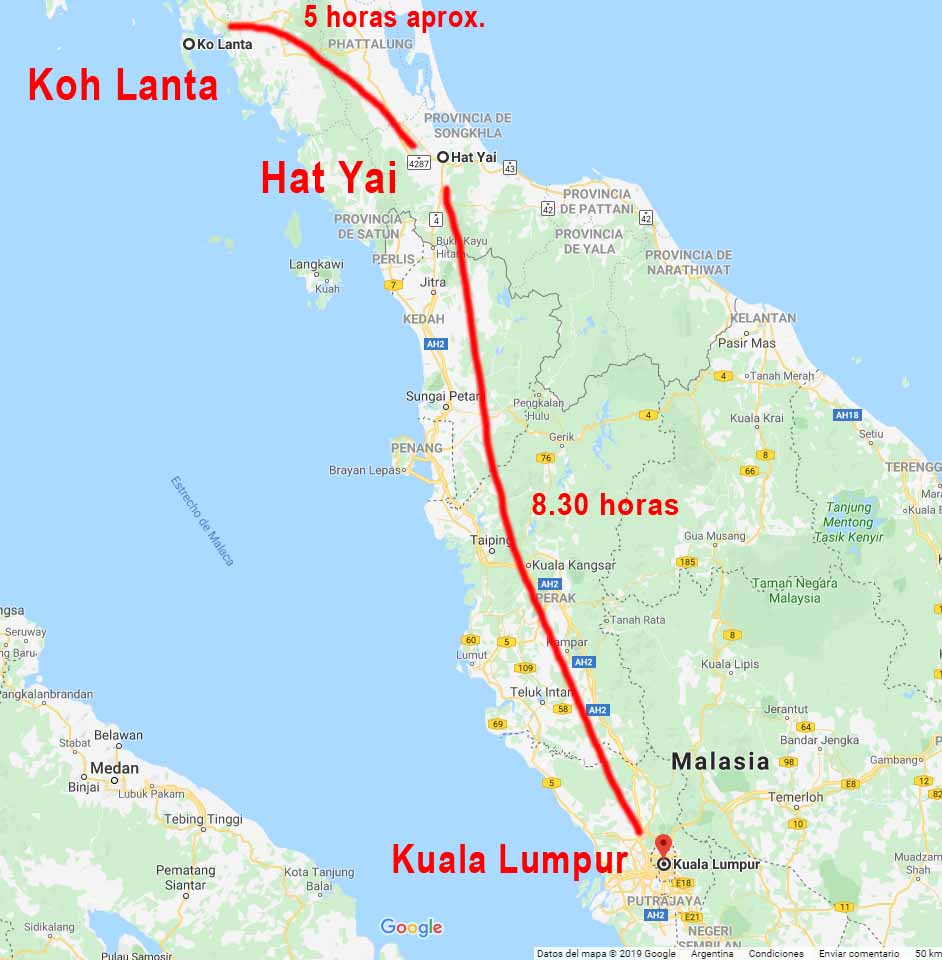
The train arrives at KL Sentral, Kuala Lumpur's main station. This massive transportation hub is the heart of the city: trains, subways, and buses depart from here to various neighborhoods and other regions of the country.
Everything works in an agile and modern way, with constant connections reminiscent of large Asian cities like Tokyo.
Border crossing
After about an hour of travel, the train stopped at the border between Thailand and Malaysia for immigration control. The entire process was quite simple: no visa was required or complicated procedures (at least for Argentinians), so in about 30 minutes I had my passport stamped and was back on board, ready to continue the journey to the capital.
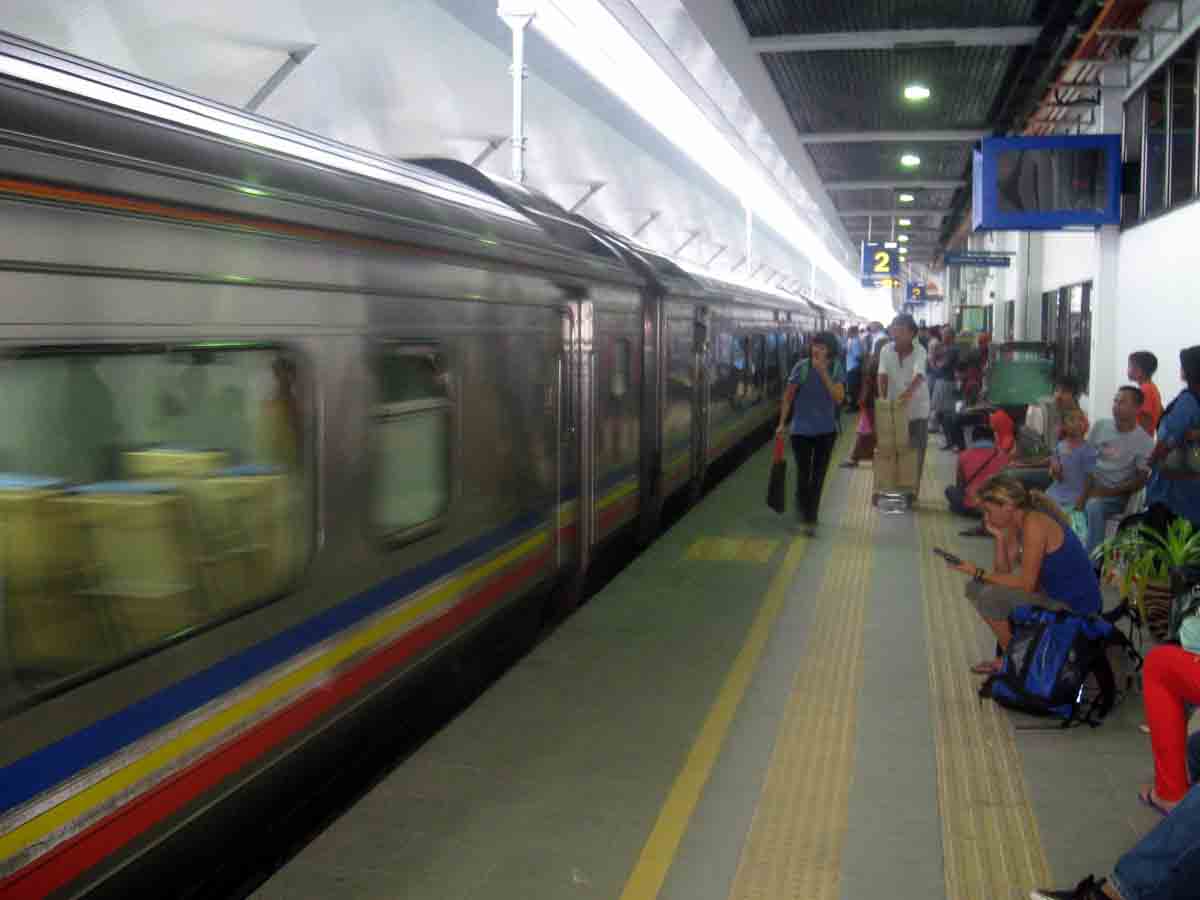
Travel tip: From Koh Lanta and other cities in southern Thailand, there are agencies that sell the complete transfer to get to Kuala Lumpur, but if you do the math, it ends up being cheaper to travel on your own than to hire those packages.
The contrast between Thailand and Malaysia
Crossing the border between Thailand and Malaysia isn't just a change of country; it's also a very obvious culture shock. In a matter of kilometers, you go from Buddhist temples, chaotic markets, and streets packed with motorcycle taxis to an environment dominated by mosques, Arabic signs, and a strong presence of Muslim culture.
This dramatic transition makes the train ride even more interesting, because you experience firsthand how identity changes from one side to the other.
It's also evident in the architecture and urban layout. While Thailand is dominated by low-rise houses, golden temples, and a more chaotic atmosphere, Malaysia features modern buildings, neighborhoods with British colonial influences, and a more structured urban order.
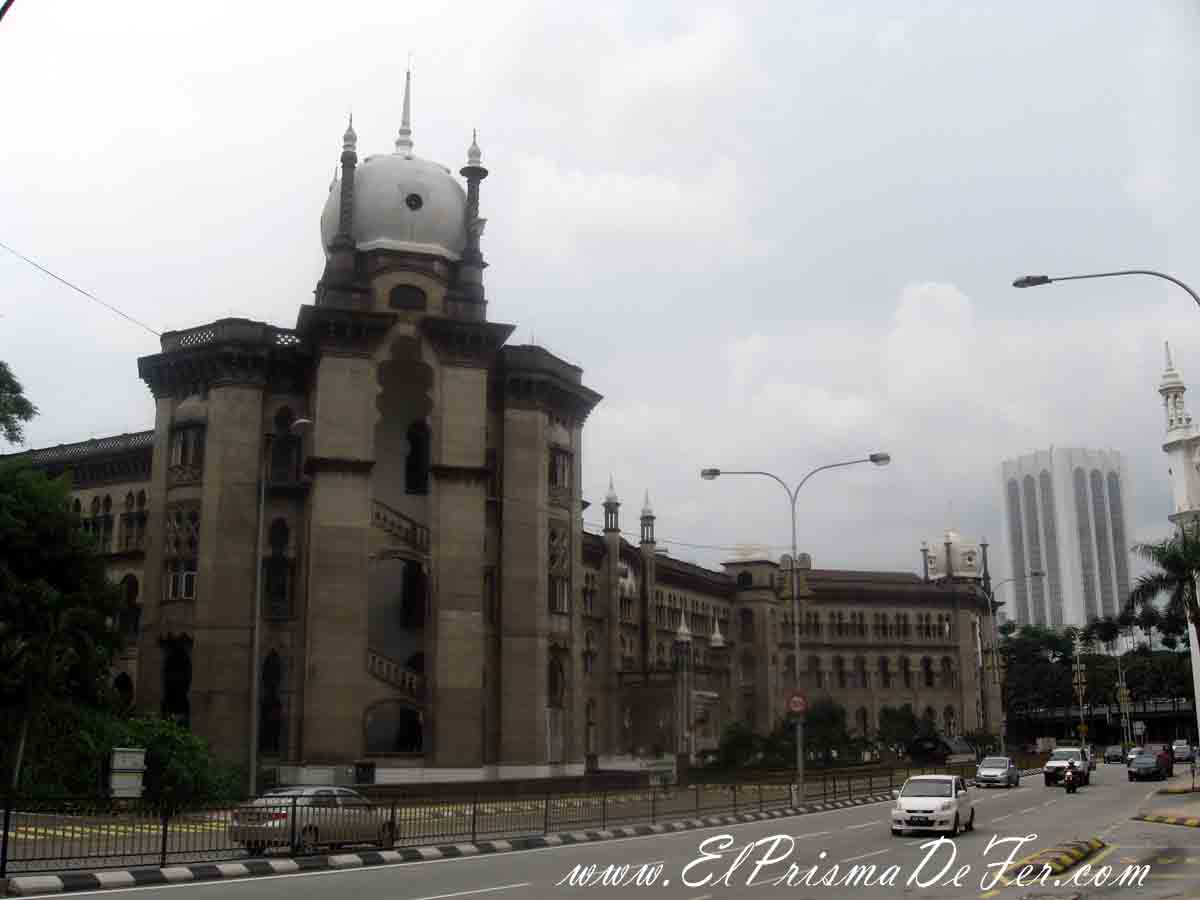
This blend of modernity with Islamic tradition makes Malaysia a country with a very distinct identity, which is evident from the moment you cross the border.
Furthermore, unlike other countries in the region, English is widely spoken in Malaysia. Street signs, signage, menus, ticket offices—everything is generally in the local language and English, making it easier to communicate and be understood by locals.
Where to stay in Kuala Lumpur
Malaysia's capital offers a wide variety of neighborhoods to choose from, each with a unique atmosphere.
- Chinatown is a favorite with travelers for its affordable prices, proximity to temples and markets, and easy walking distance.
- Bukit Bintang is the liveliest area, full of restaurants, shopping centers and nightlife, ideal if you are looking for constant movement.
- KLCC is home to the famous Petronas Towers and the most modern hotels, perfect for those seeking comfort and luxury in the heart of the city.
- Another very practical option is KL Sentral, since it is next to the main transport hub, it easily connects to any part of Kuala Lumpur and even to other cities.
- Bangsar/Mid Valley is a more residential and quiet neighborhood, with huge shopping malls and a more local feel.
- Chow Kit offers budget accommodation and a more authentic feel, although it is not the most touristy area.
In my case, I stayed at the Travel Hub Guesthouse. The location was convenient for exploring the city, just steps from Chinatown, although I must say that the neighborhood changed its appearance a bit at night.
Upon returning from my walk, I saw people sleeping on the streets, begging for money, or sifting through trash—scenarios I hadn't encountered in other Southeast Asian countries. Still, the accommodation was good value for money, and it proved a comfortable base for exploring Kuala Lumpur.
How to get around Kuala Lumpur
Getting around Kuala Lumpur is quite easy thanks to its modern and varied public transport system.
The city has several metro and light rail (LRT and MRT) lines, as well as the monorail, which connects key points such as Bukit Bintang or KL Sentral. Tickets are affordable and stations are well signposted, making it one of the most convenient ways to get around the city without worrying about traffic.
Another option is city buses, although they tend to be slower due to traffic. There is a free bus option called GO KL. These cover many of Kuala Lumpur's tourist sites, such as the Petronas Twin Towers, Chinatown, the KL Tower, and others. They run every 5 to 10 minutes and have air conditioning and WiFi.
As for taxis, it is advisable to use applications like Grab, which work similarly to Uber and offer fixed and cheaper prices than traditional taxis.
For short distances or trips between central neighborhoods, walking is also a good option, although keep in mind that the heat and humidity can make it a bit tiring.
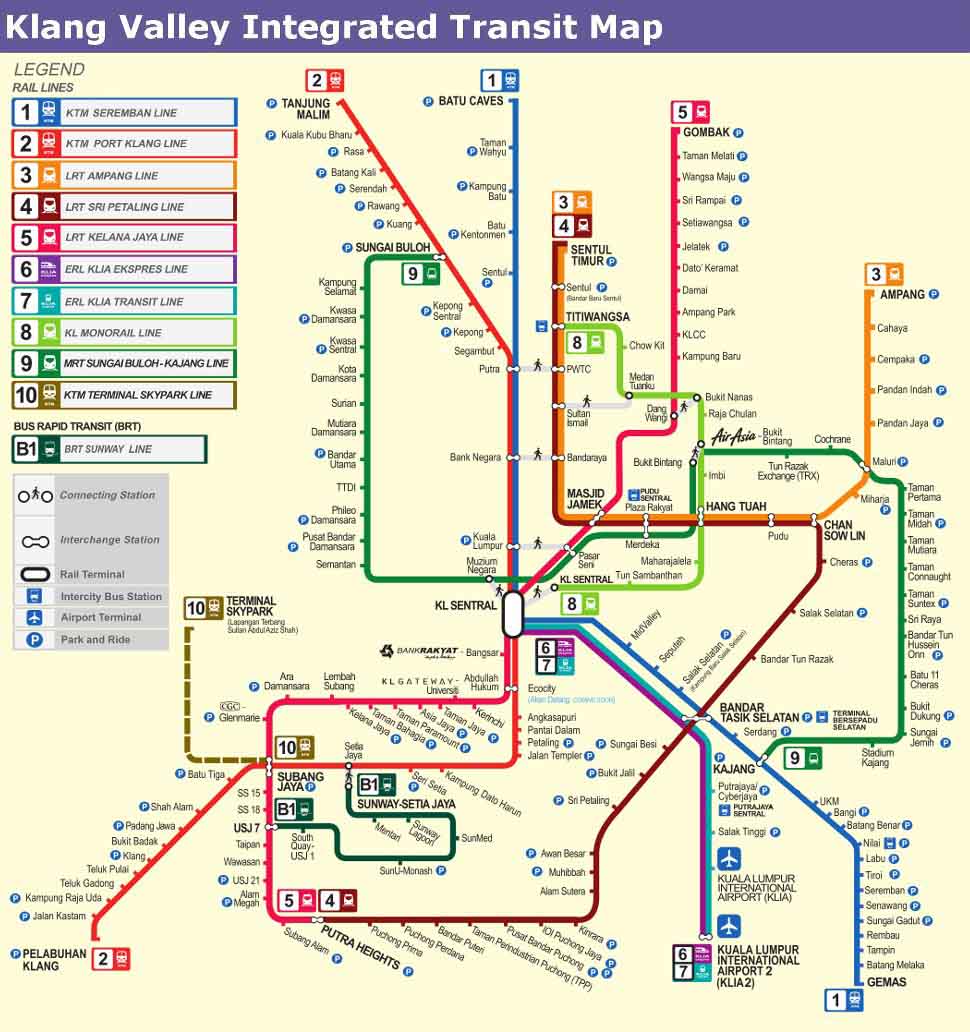
How to get to Kuala Lumpur Airport
The airport has two terminals, slightly separated but connected by a train. For international flights, it's usually Terminal 1, and for low-cost airline flights, Terminal 2.
There are two options to get to the Airport by public transport
- By train (faster but more expensive): There are two types of trains between the airport and the city. The KLIA transit and the KLIA Express. Both arrive at KL Sentral station, but one has three intermediate stops, while the other doesn't. Both options have roughly the same travel time (about half an hour), so take the first one that arrives (they cost the same).
- By bus (slower but cheaper): There are several companies such as Aerobus, AirportCoach, Airport Liner, Jetbus, Skybus, Starmart Expresss, Star Shuttle, Transnasional or YoYo BusSome communicate with the KL Sentral Station and others go to the Pudu Raya terminal (in the Chinatown district). The journeys in both cases are approximately one hour but it always depends on traffic.
Map with the main attractions to see in Kuala Lumpur
What to do in Kuala Lumpur
Malaysia's capital combines modernity, tradition, and an incredible cultural diversity reflected in its attractions. These are some of the must-see places and experiences:
Walking around the city
As I began to explore it, I realized how different it is from cities like Bangkok or Hanoi. Kuala Lumpur combines the modernity typical of large Western cities with the Muslim influence reflected in the architecture of its buildings and the design of the city.
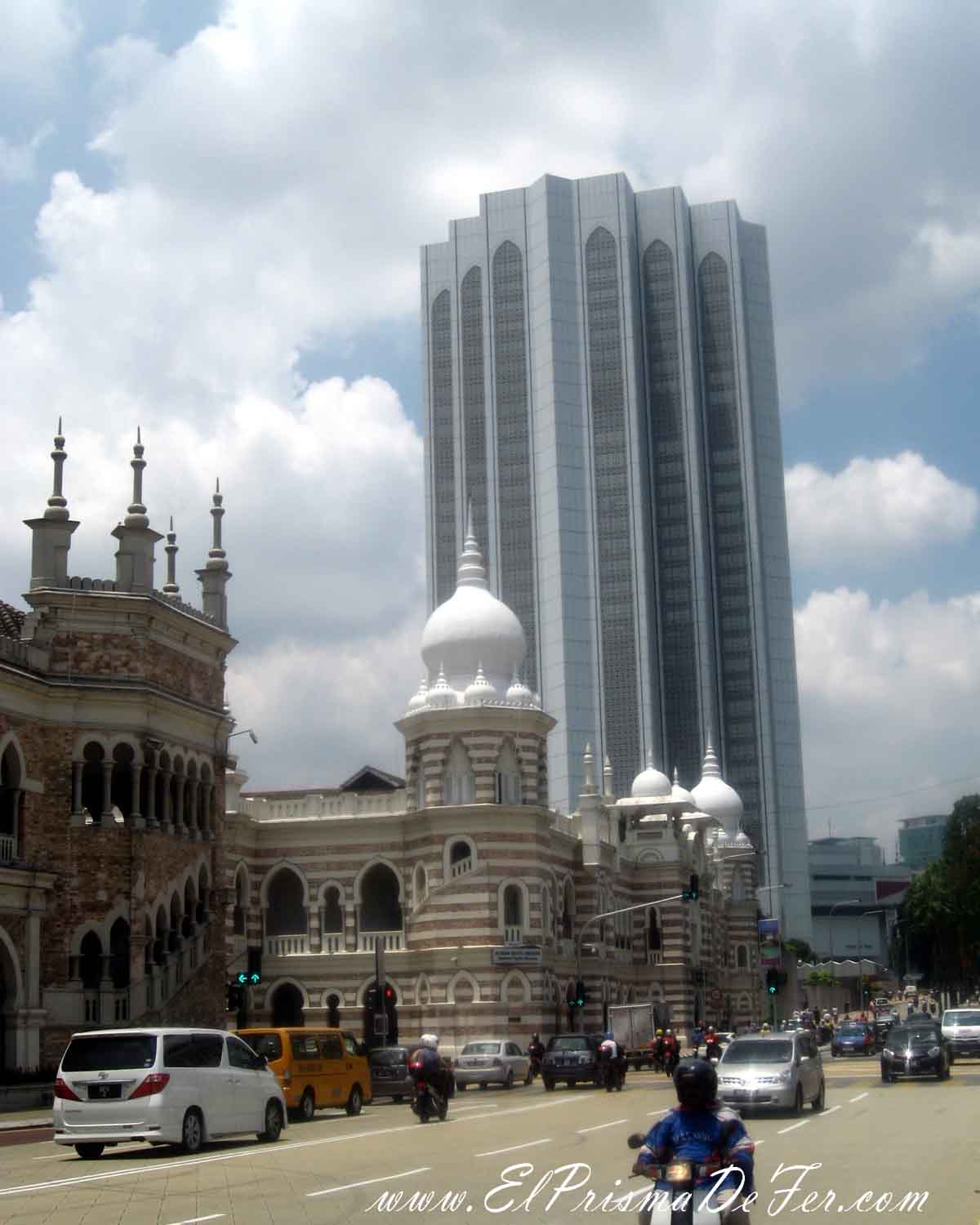
On one side, you'll come across imposing mosques, and on the other, futuristic skyscrapers and giant shopping malls. The city offers everything: modern buildings, monorails that crisscross the city from end to end, enormous LED screens in the streets... but always with the mark of Muslim culture, which gives it a unique and easily recognizable character.
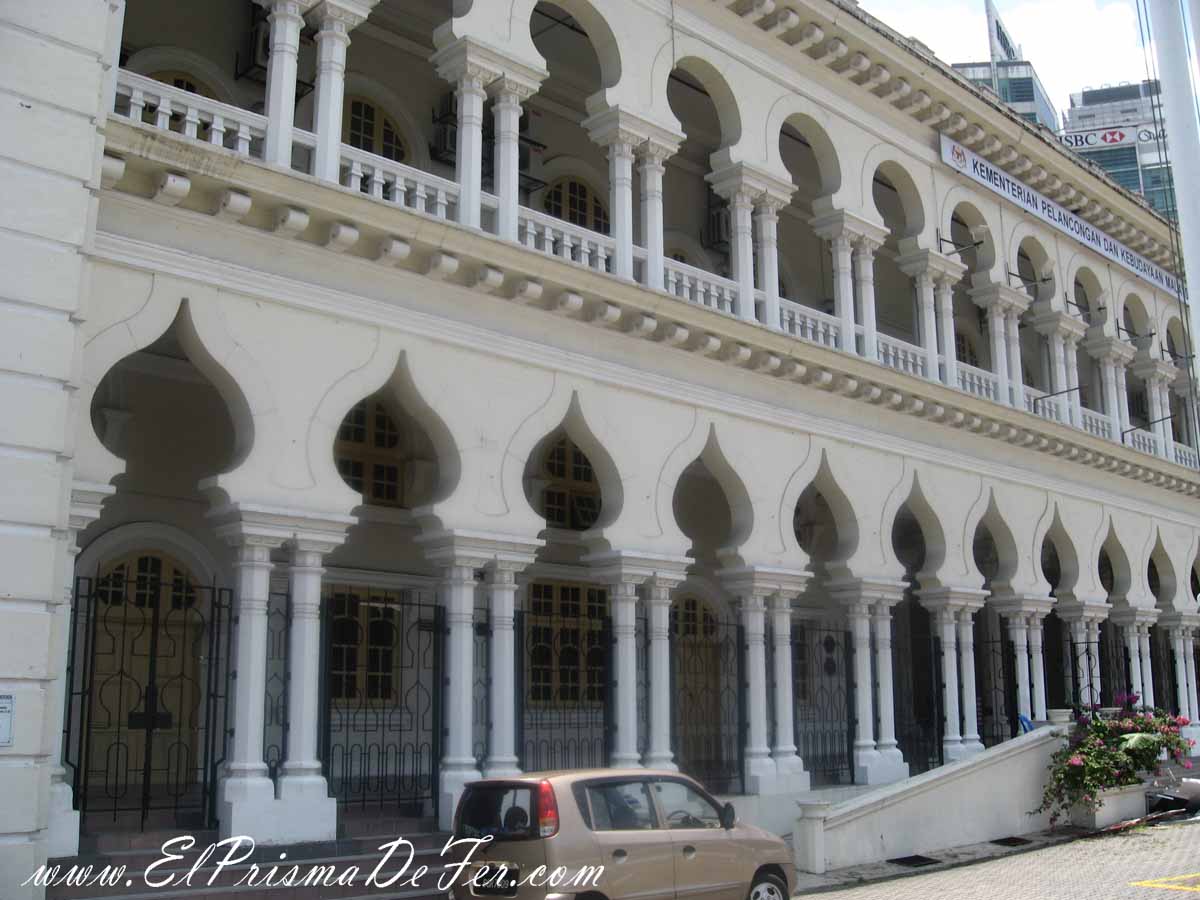
Admire the unforgettable Petronas Towers
It's impossible to think of Kuala Lumpur without the Petronas Towers coming to mind. Early in the morning, as soon as I arrived in the city, I'd seen them looming timidly in the distance, as if wanting to welcome me. Something told me that if they were impressive from afar, they would be enormous up close.
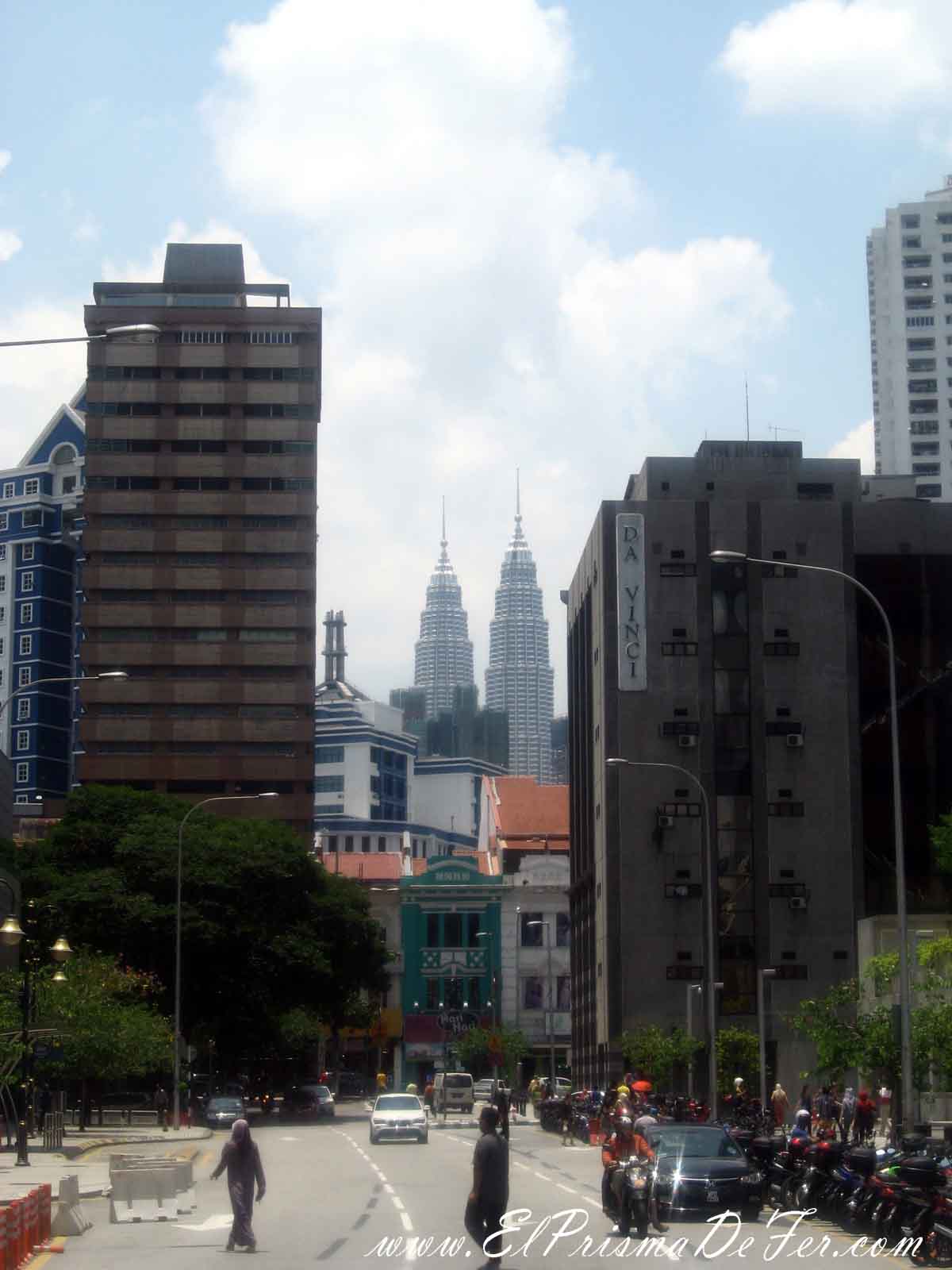
It was almost six in the evening when I finally found myself in front of these two giants. I'd been walking all day, back and forth, taking trains, and exploring the city nonstop, until suddenly there they were, standing before me. "Wow" was my first thought. The Petronas Towers are incredible: inseparable, like holding hands. One without the other would be meaningless; they need each other and accompany each other, forming a dazzling whole.
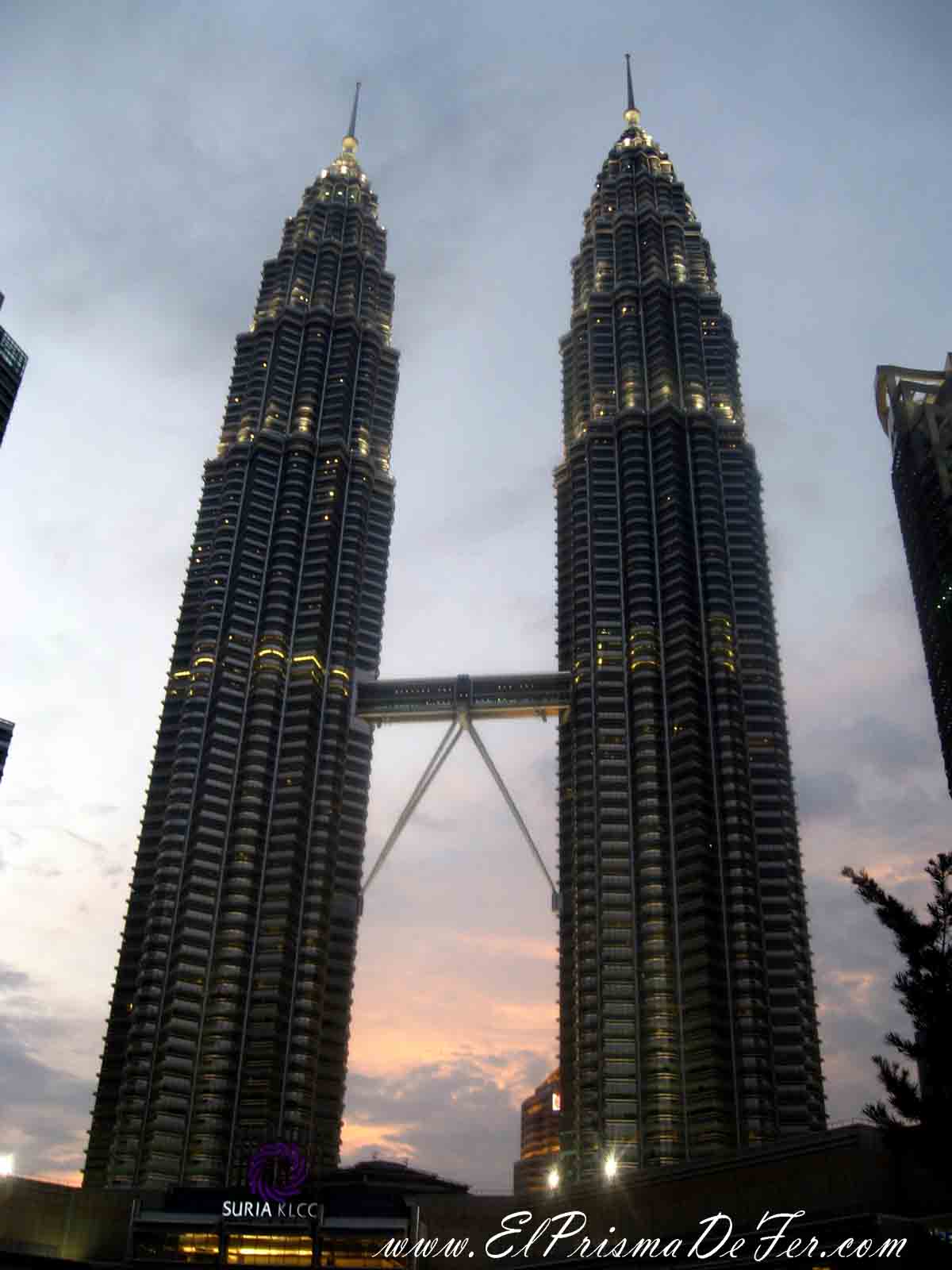
I spent over an hour in the park across the street simply admiring them. They are, without exaggeration, a true work of art, designed by none other than the Argentine architect Cesar Pelli, a true pride.
When I managed to snap out of that state of fascination, I decided to enter the building with the idea of going up to the observation deck. On the first floors, I discovered a gigantic shopping center, featuring all the international brands, a true paradise for shopping lovers.
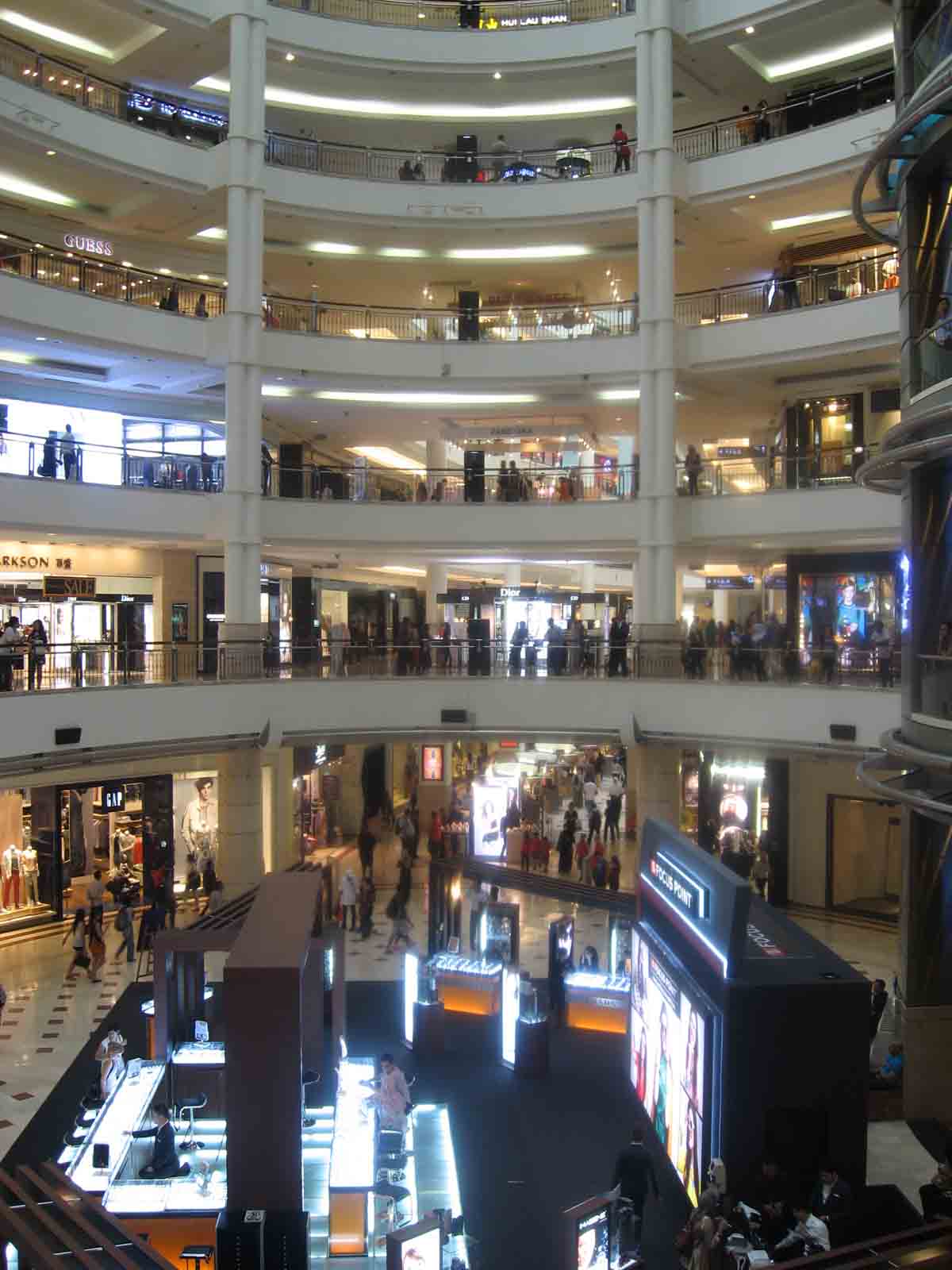
But when I checked the price of the skybridge entrance, my spirits plummeted. It cost around USD 25, which, on my backpacking budget, was equivalent to a couple of nights' accommodation. So, just as I entered, I turned around and went back to enjoy the towers from the outside... for free, and with the same magic :D
Viewpoint to contemplate the Petronas Towers from the front
Luckily, I had been told that there was an alternative viewing point at a hotel across from the towers. This is the Traders Hotel, which has the famous Sky Bar on its upper floors, from where you can get spectacular views.
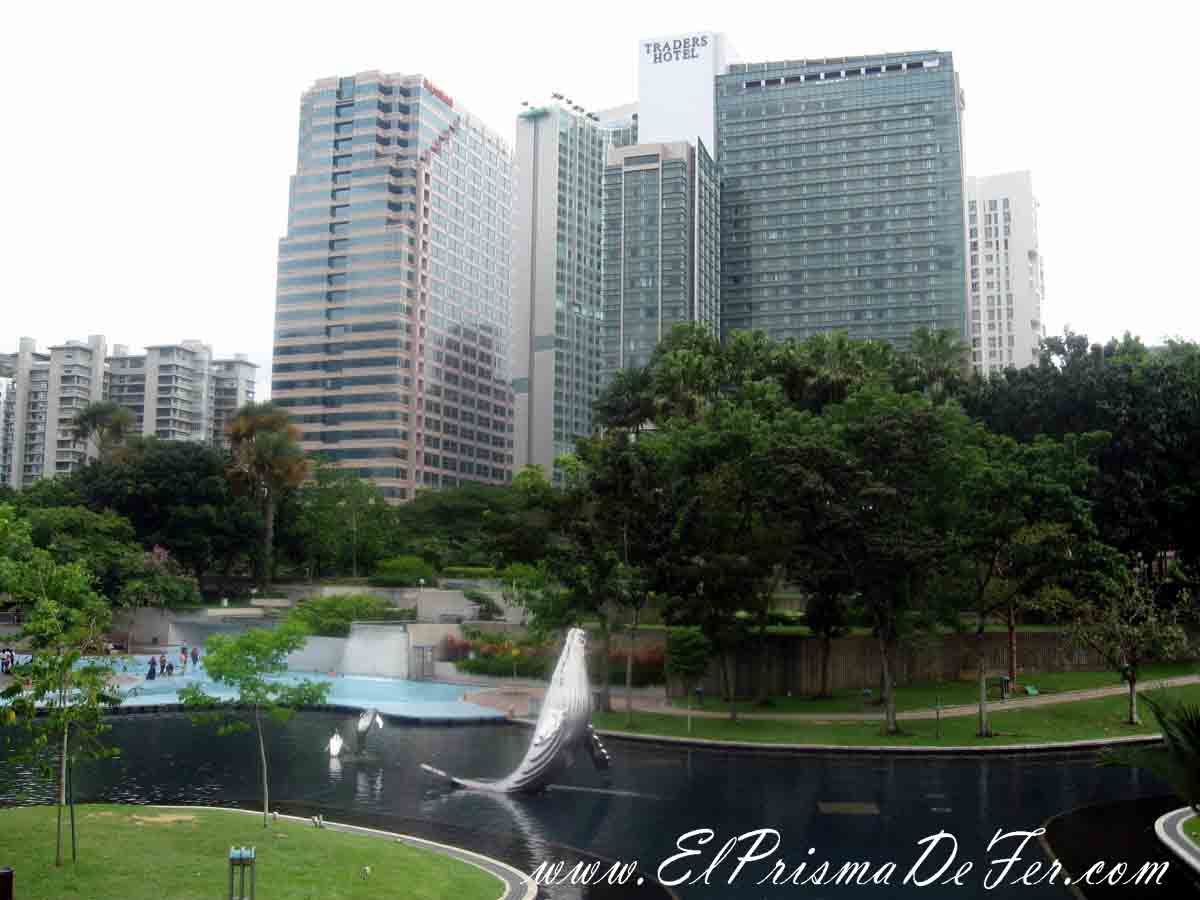
I thought I'd be required to consume something to enter, but to my surprise, no one said anything. So I made my way inside, camera in hand, and enjoyed another incredible view of the Petronas Towers, taking photos without spending a single ringgit. A real find!
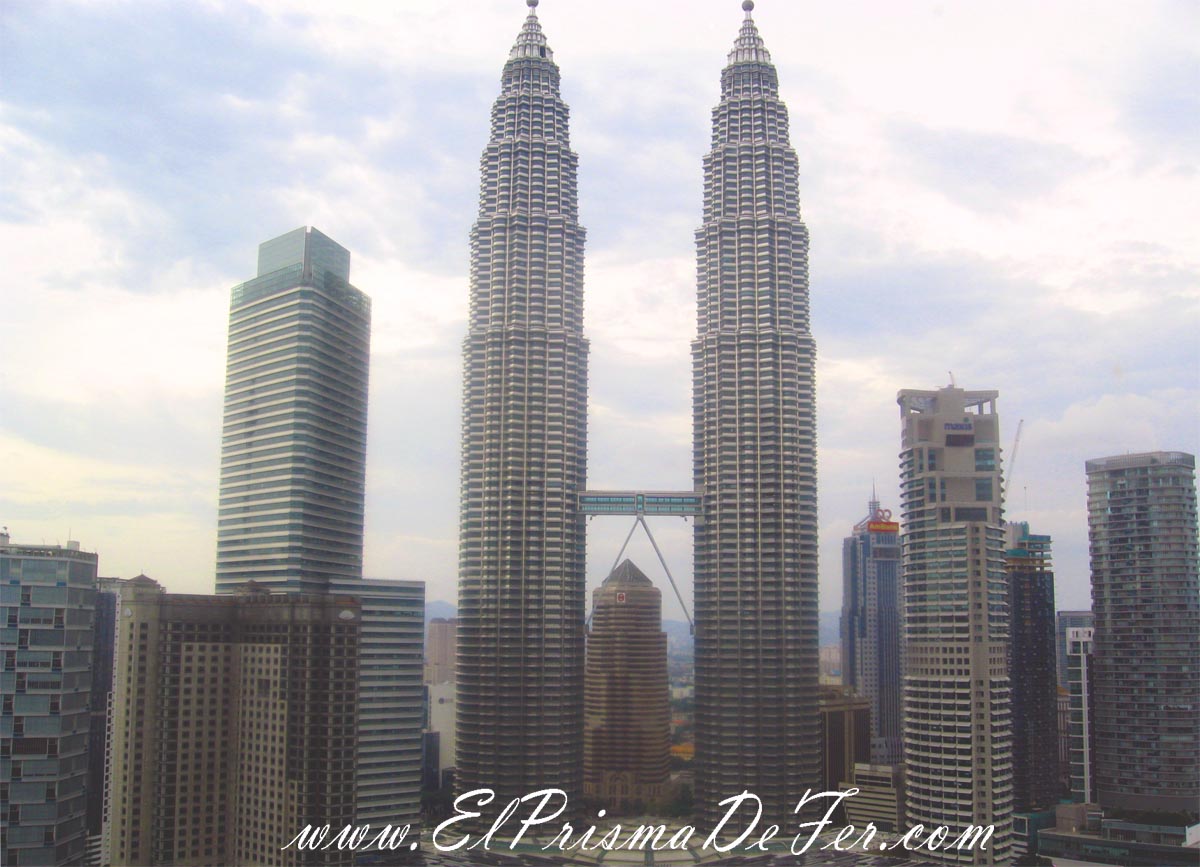
Without a doubt, what impressed me most about Kuala Lumpur was the Petronas Towers. Their design, location, and the energy they transmit make them a great symbol of the city. And if they're dazzling by day, they become even more magical when illuminated at night.
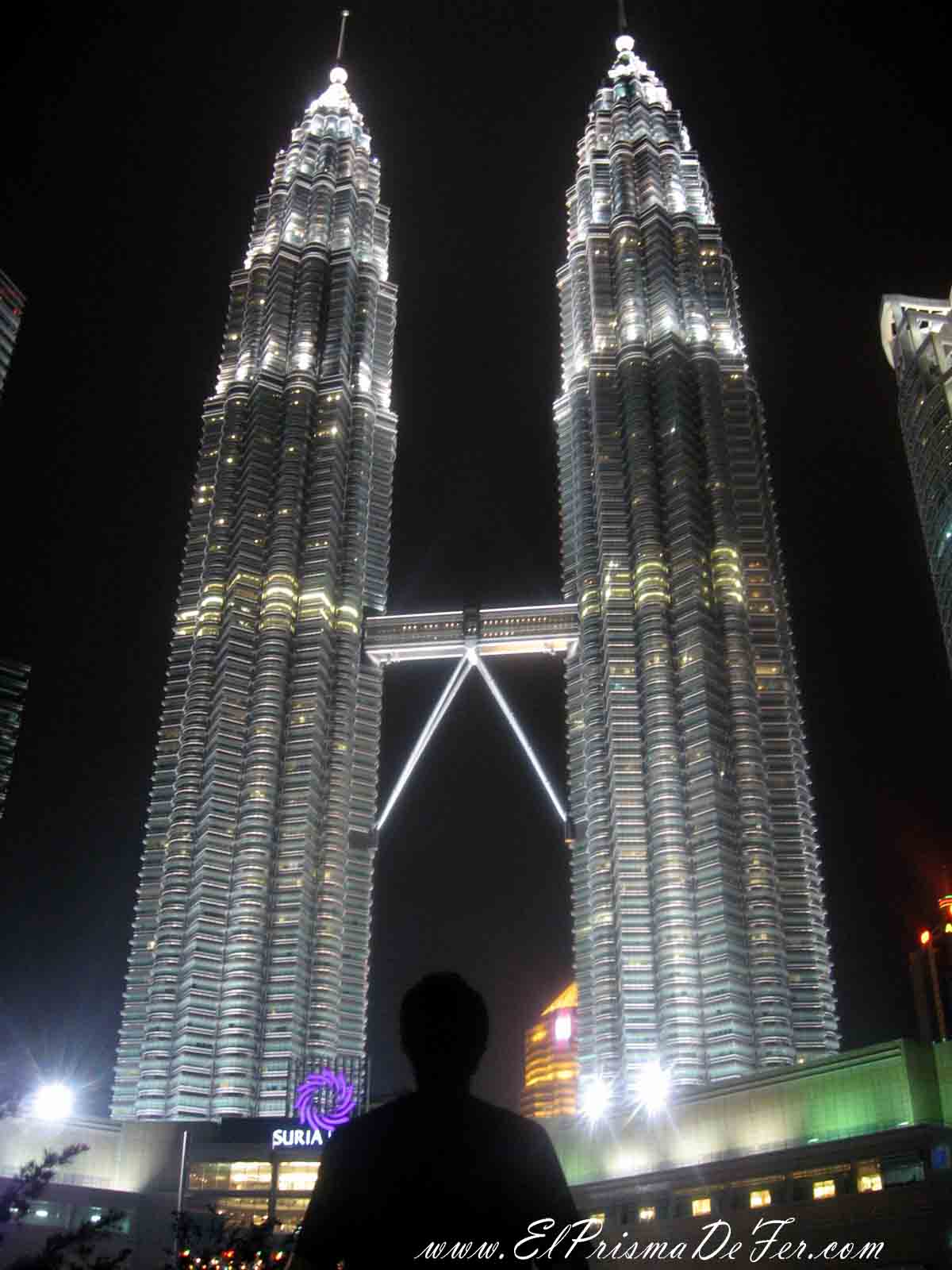
Watch the dancing fountain show at KLCC Park
KLCC Park is a green space located right in front of the Petronas Towers, ideal for walking, relaxing and enjoying a break from the hustle and bustle of the city. The park features paths, rest areas, and an artificial lake where the famous Dancing Fountain Show takes place, a water and light spectacle that combines music and choreography.
This show usually starts around 8:00 PM and is repeated several times throughout the evening, offering a perfect time to enjoy the illuminated towers while relaxing in the park.
It's also an excellent place to take panoramic photos of the Petronas Towers from different angles. During the day, you can also take advantage of the opportunity to walk among the vegetation, observe sculptures, and enjoy the relaxed, family-friendly atmosphere that contrasts with the modernity of the surrounding skyscrapers.
Stroll through Chinatown (Petaling Street)
There can't be a major capital without a good Chinatown to go with it :D. The main street of Chinatown, and where everything happens, is the Petaling Street.
It's a vibrant neighborhood ideal for browsing markets, trying street food, and visiting temples like Guan Di or Sri Mahamariamman.
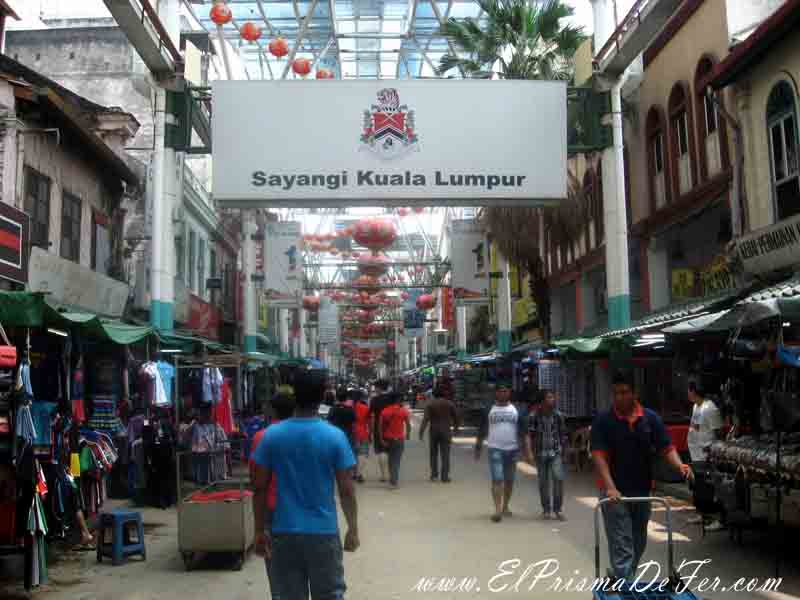
Visit the Bukit Bintang shopping district
It's the liveliest area for shopping, dining on Jalan Alor (the famous food street), or enjoying the nightlife. If you're looking for a spot of shopping, this is the place to go.
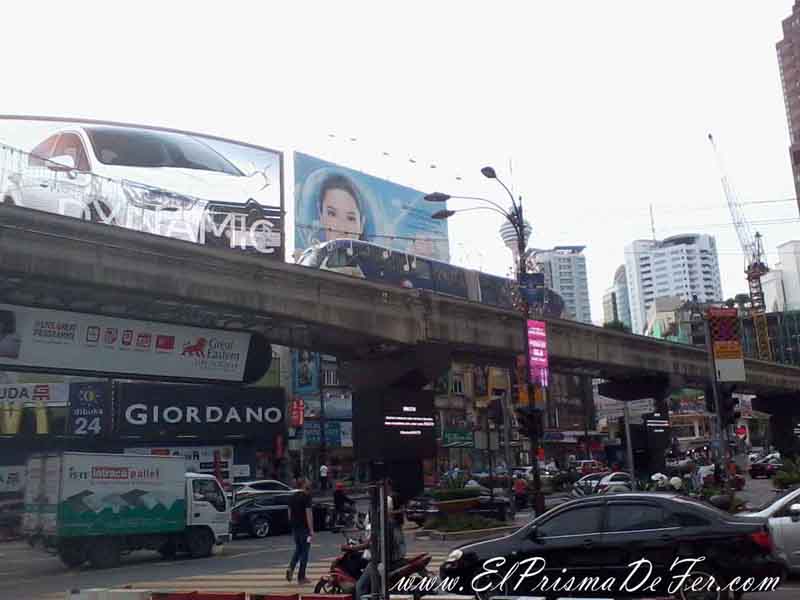
Discover Little India
They say that walking through its streets makes you feel like you're in India, although for me it's not quite like that. However, there are interesting places to visit, such as the Vivekananda Ashram, the Sri Lanakan Hindu temple, and the Maha Vihara Buddhist temple.
But the most pleasant thing about coming to stroll through this neighborhood is undoubtedly letting yourself be carried away by the colors, sounds, and aromas that are somewhat reminiscent of India.
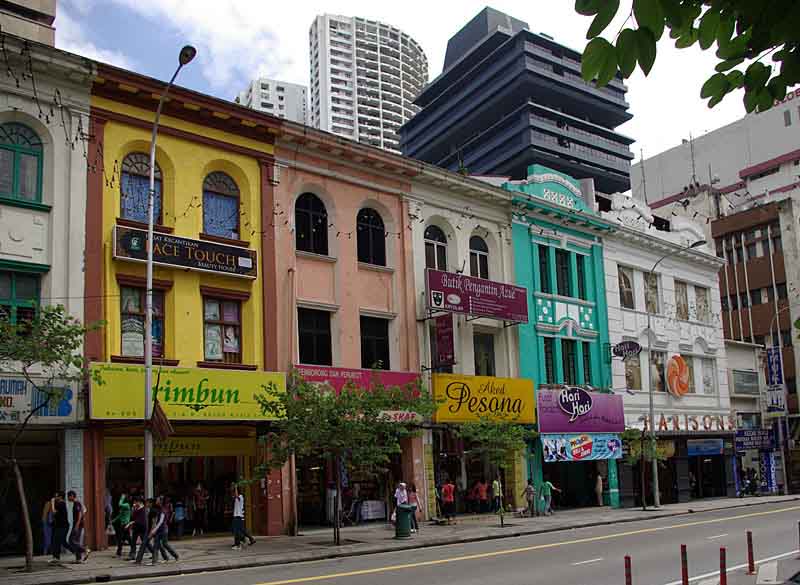
Appreciate the architecture of the Palace of Culture
This is the main cultural space in Malaysia where all kinds of theatrical activities are presented, such as musical shows, zarzuela, classical music concerts and opera with local and international performances.
The theater is located next to the National Art Gallery on Jalan Tun Razak, in the heart of the Malaysian capital, and has quite striking architecture.
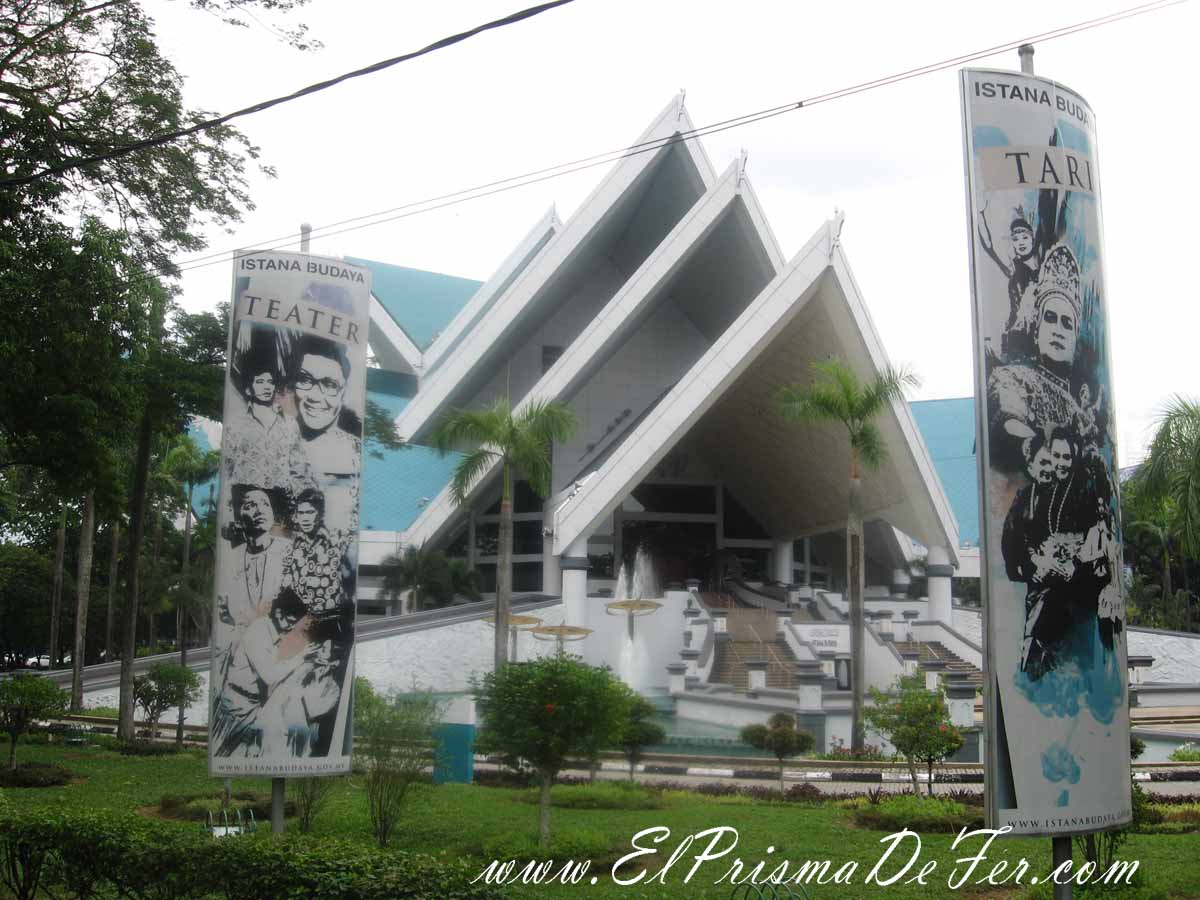
Visit the Lake Gardens
Near KL Sentral, there's a large park with a variety of attractions. It's the lungs of Kuala Lumpur, where you'll see many people walking or exercising.
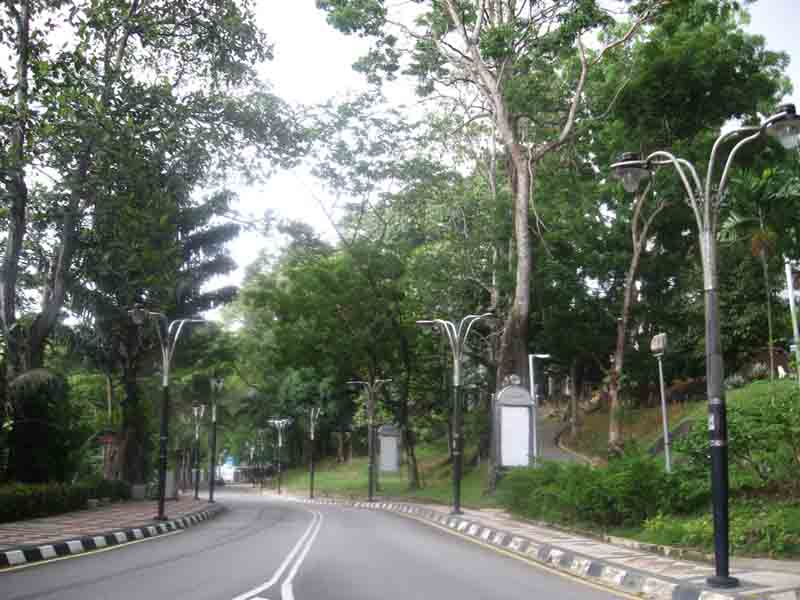
Being so large, there are several attractions to see within the Park, among which we can mention:
Perdana Botanical Garden
The Perdana Botanical Garden serves as a refuge for those who need a break from the city. If you come in the morning, you'll find people jogging and practicing tai chi, for example.
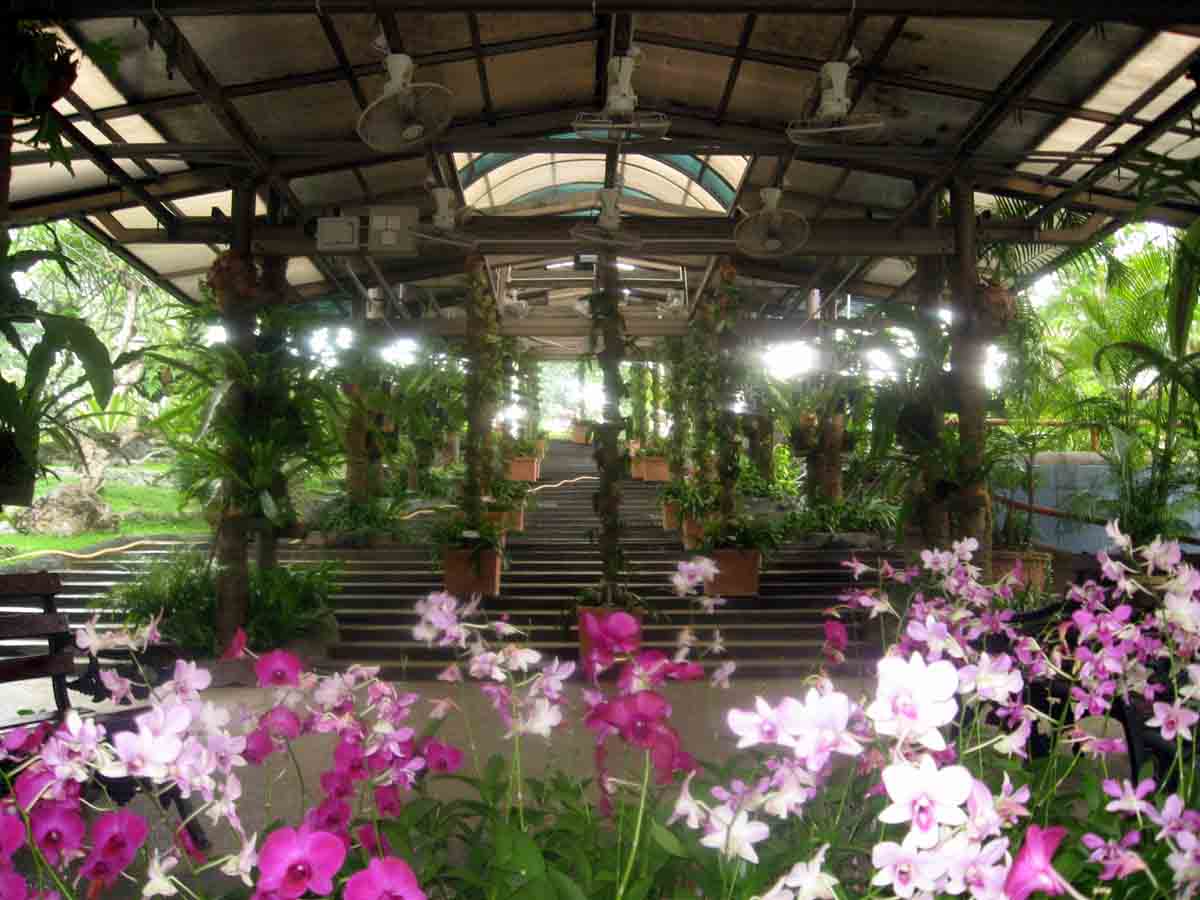
National Mosque of Malaysia
The National Mosque of Malaysia, also known as Masjid Negara, is considered the national symbol of Islam.
With its striking blue hues, the main building includes a large prayer hall and 48 smaller domes. Its design fuses traditional Islamic art and calligraphy with modern shapes and patterns. In the Great Hall, the walls are beautifully covered with verses from the Quran.
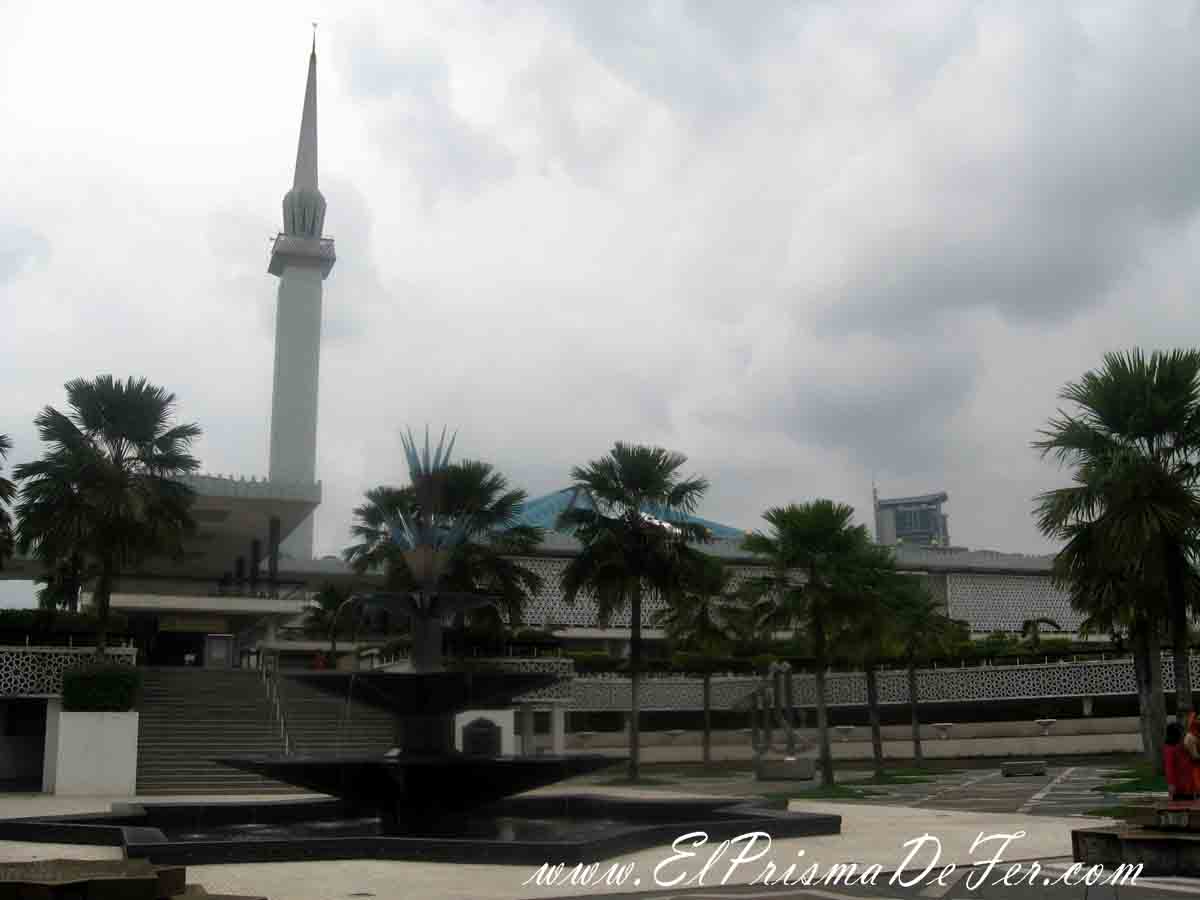
With its striking blue hues, the main building includes a large prayer hall and 48 smaller domes. Its design fuses traditional Islamic art and calligraphy with modern shapes and patterns. In the Great Hall, the walls are beautifully covered with verses from the Quran.
Museum of Islamic Art
The Museum of Islamic Art is the largest in Southeast Asia and one of Kuala Lumpur's most popular attractions.
It features a massive turquoise dome atop the building, glass walls that allow natural light to flood in, vaulted ceilings adorned with intricate Islamic patterns, and a 30,000-square-meter exhibition space.
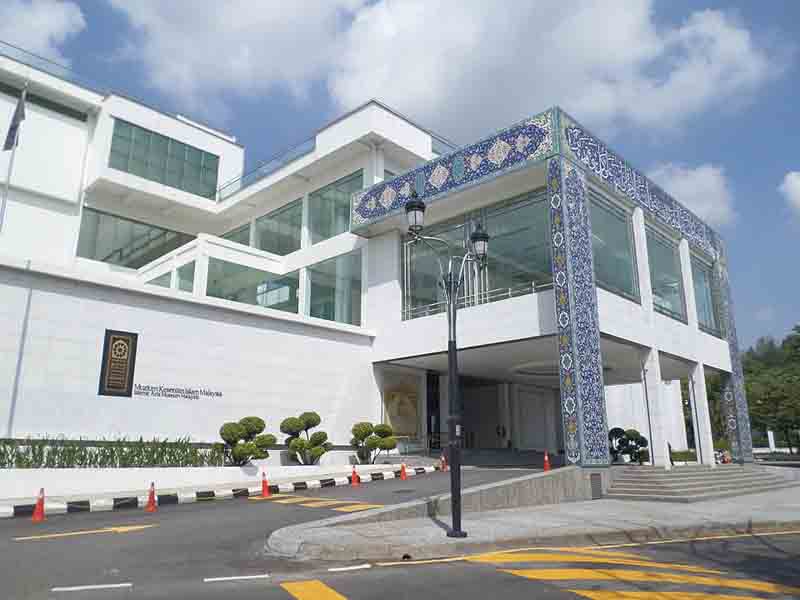
Featuring stunning collections of Islamic decorative arts from around the world, this impressive building sits on the edge of Lake Gardens and is a five-minute walk from the National Planetarium and the National Mosque.
The museum features, among other things, displays of clothing, furniture, weapons, and also detailed models of famous mosques from around the world, notably the Masjid Al-Haram in Mecca and the Masjid Nabawi in Medina.
Kuala Lumpur National Monument
The National Monument, located at the northern end of the Lake Gardens, was built in 1966 to honor the lives of the 11,000 people who died during the First World War.
The monument of seven soldiers standing and supporting their fallen comrades symbolizes courage, leadership, sacrifice, strength, suffering, unity, and vigilance.
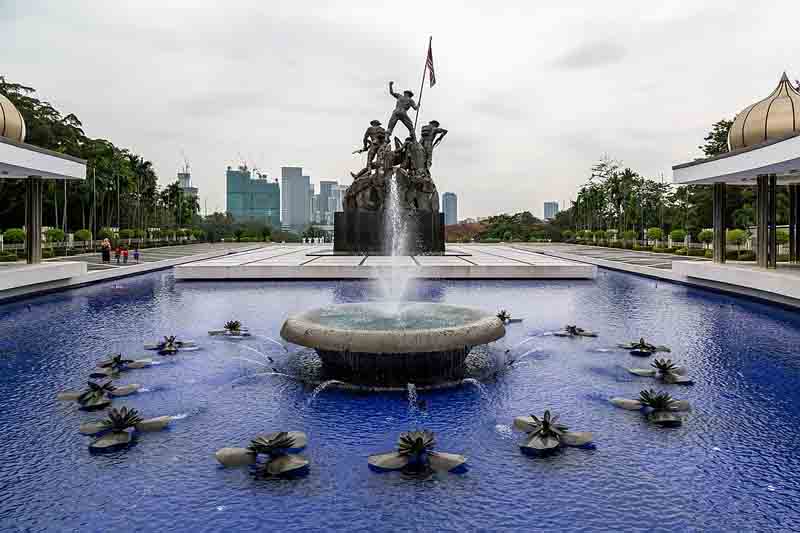
Kuala Lumpur National Planetarium
The National Planetarium, also known as Planetarium Negara, is dedicated to all things science and astronomy. Located on a hill east of Lake Gardens, it is crowned by a blue dome easily visible from nearby streets.
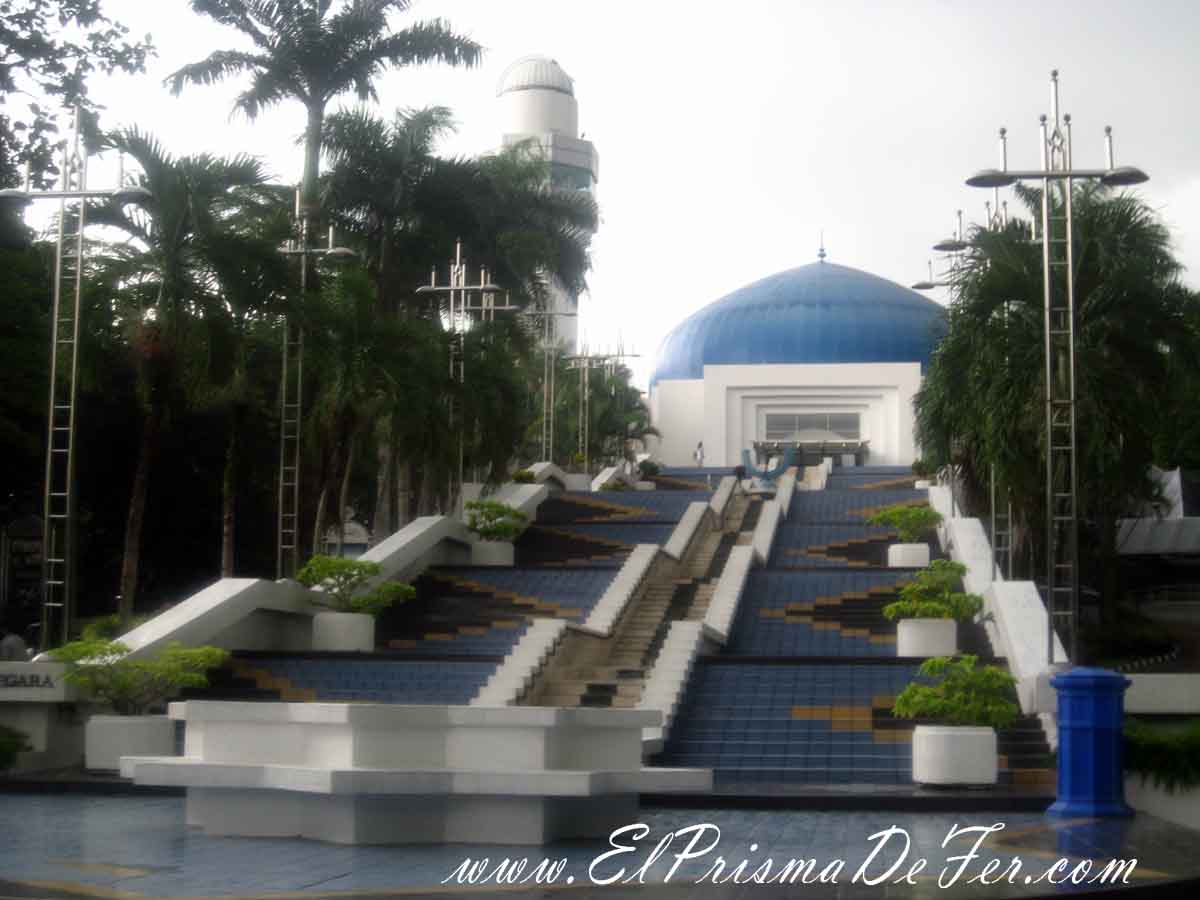
The main entrance evokes a teleportation chamber leading to a series of rooms containing two planetariums with interactive exhibits (touchscreen computers and hands-on experiments) plus a space theater.
National Museum of Kuala Lumpur
The National Museum is located near the southern end of Garden Lake, beyond the National Gallery of Art.
Here we can find an excellent introduction to the history, economy, geography, arts, crafts and culture of Malaysia.
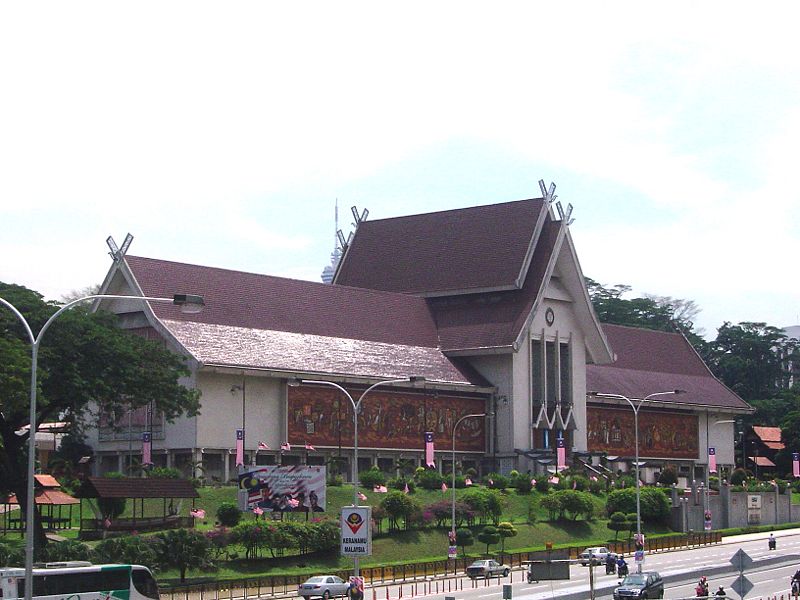
The building has a wide traditional Minangkabau-style roof and a main entrance flanked by two large Italian glass mosaic murals depicting the country's major historical events and cultural activities.
Visitors can enjoy free guided tours throughout the week: English-language tours take place at 11:00 a.m. on Tuesdays, Thursdays, and Saturdays.
Bird Park
The Bird Park is one of the largest aviaries in the world, where visitors can enjoy some of the most beautiful bird species roaming through the park's lush vegetation.
Daily programs like the bird show and eagle feeding are perfect for those who want a closer interaction with these exciting creatures.
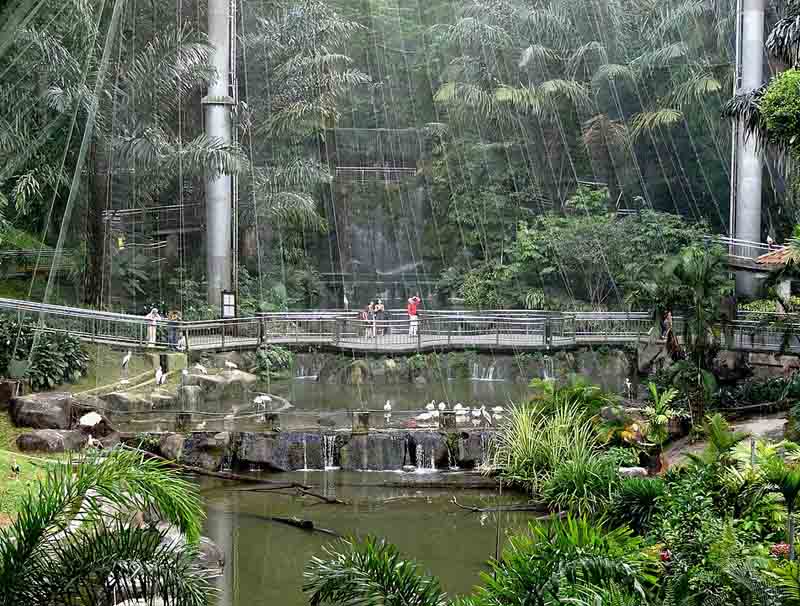
Butterfly Park
Butterfly Park is also located at Lake Gardens and is home to over 6,000 butterflies of 120 species. Landscaped like a lush garden with many flowers, these colorful creatures have been known to float onto your clothes and hands, sticking like badges.
Also check out the breeding and reproduction area where you can see butterfly larvae emerging from their cocoons.
In addition to butterflies, a wide range of insects are on display, including rhinoceros beetles and praying mantises. There's also a souvenir shop where you can purchase frames of preserved butterflies, scorpions, and other insects.
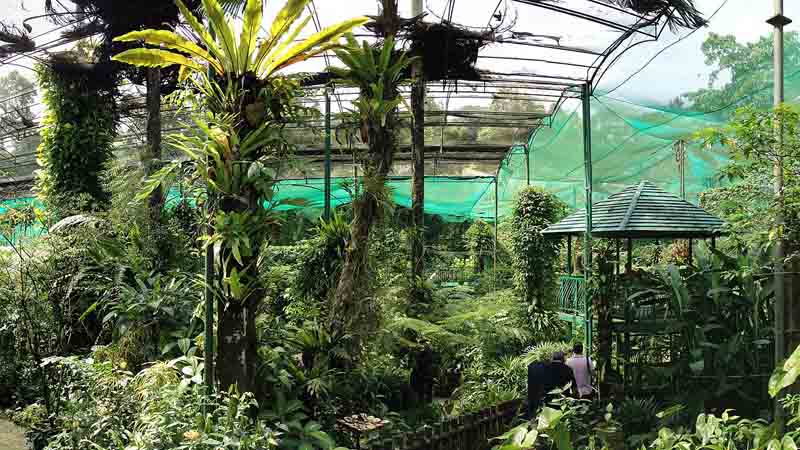
Visiting Batu Caves: practical information
The Batu Caves are one of the most iconic destinations near Kuala Lumpur and an important Hindu shrine outside of India.
It is a limestone cave complex that rises over a cliff of more than 100 meters, home to several temples and shrines dedicated to the Hindu god Murugan.
The main entrance is marked by a huge golden statue of this god, which at 42 meters tall is one of the largest in the world.
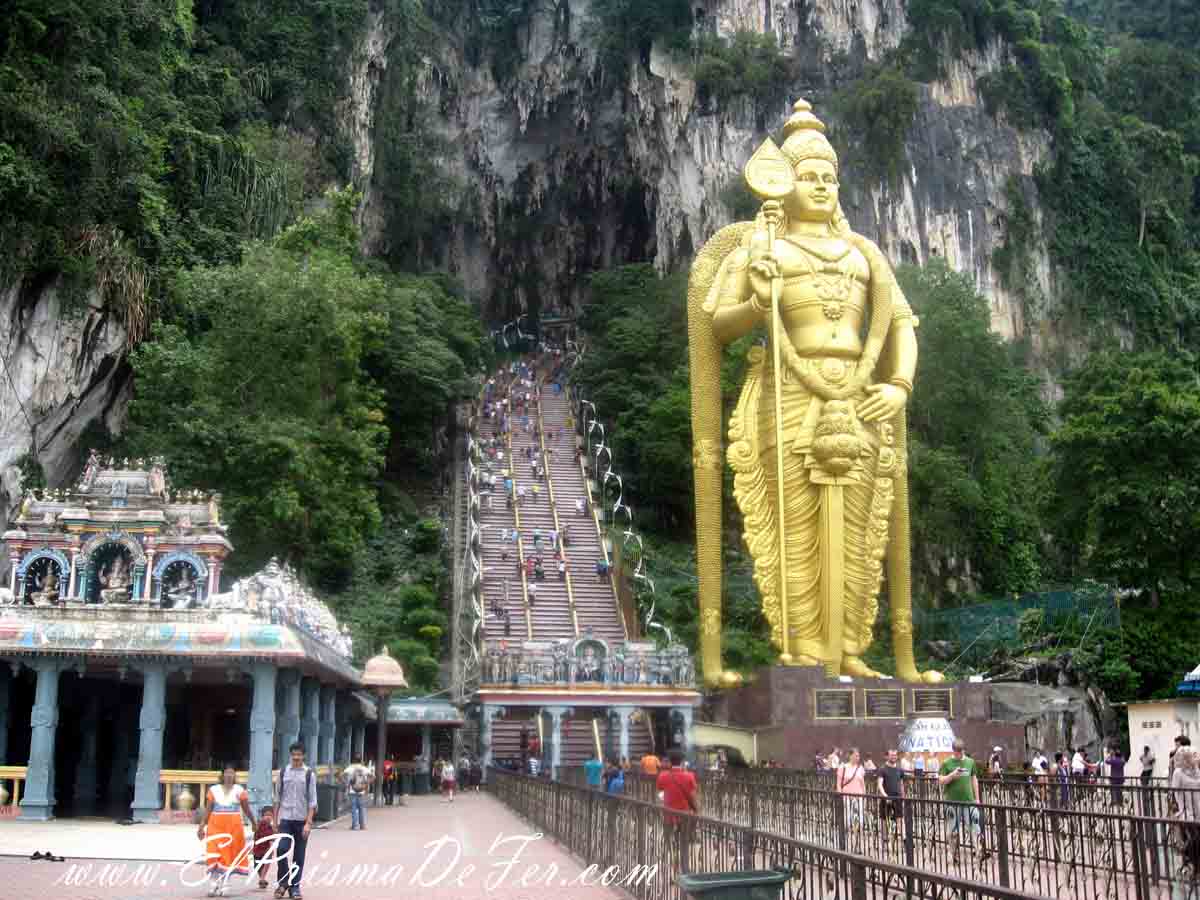
To access the caves you have to climb 272 steps, which is quite an experience in itself, while dodging the monkeys that roam the area.
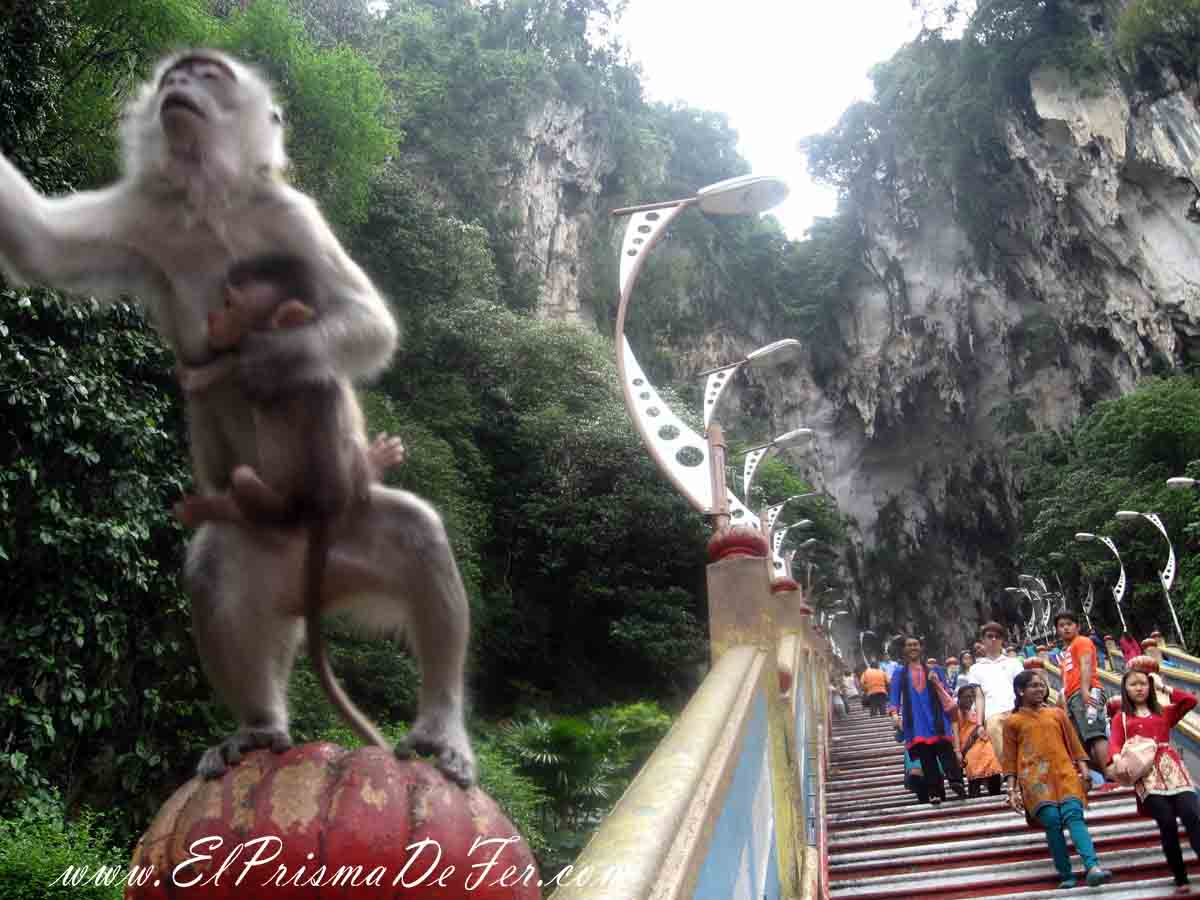
Inside the main cave, known as Temple Cave, is an active temple and altars where devotees perform daily rituals. There are also smaller caves like Dark Cave, which offers guided tours to explore its ecosystem and observe unique species of flora and fauna.
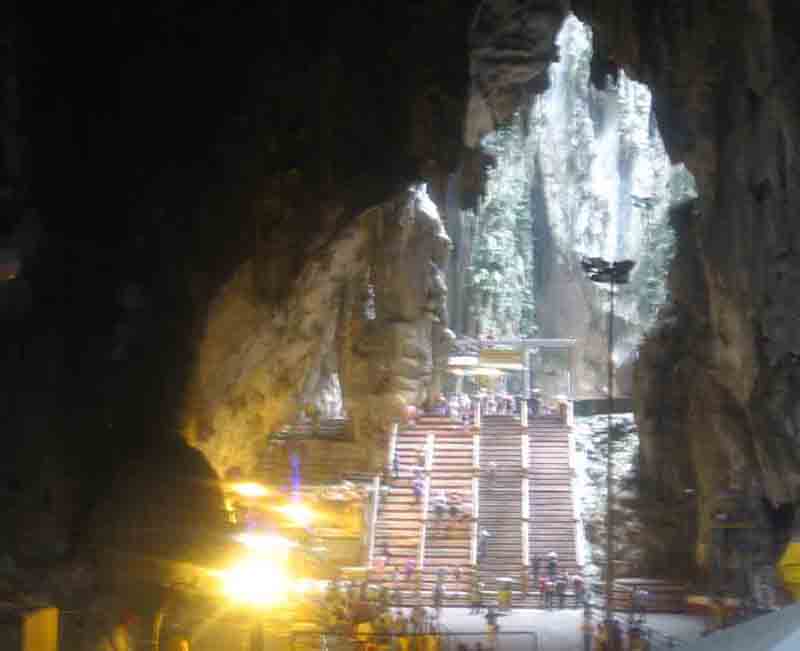
Batu Caves is not only a site of great religious significance, but also a stunning visual spectacle, with its stalactites, stalagmites, and natural light filtering through, creating a magical effect.
How to get to Batu Caves
From central Kuala Lumpur, you can easily reach it by taking the KTM Komuter train towards Batu Caves. The journey takes around 30-40 minutes, and the terminal station is right in front of the complex's entrance. Taxis and Grab are also available, making the journey around 20-30 minutes, depending on traffic.
It is also possible to go on a half-day excursion to Batu Caves, at a fairly affordable price and with pick-up from your hotel.
Schedules
The main caves are open daily, usually from early morning until late evening (approximately 6:00 AM to 9:00 PM). For the Dark Cave, guided tours usually operate at specific times and it is advisable to book in advance.
Organized activities in Kuala Lumpur
How many days to stay in Kuala Lumpur
Kuala Lumpur can be enjoyed both on a short break and on a more relaxing stay. To see the city's main attractions, such as the Petronas Towers, Batu Caves, Chinatown, Bukit Bintang, and KLCC, 2 to 3 days are usually enough. This allows you to explore the main neighborhoods, try the street food, and take photos at iconic landmarks without rushing.
If you have 4 or 5 days, you can take the time to explore more slowly, visit museums, discover less touristy cafes and markets, or even take a day trip to nearby places like Batu Caves, Putrajaya, or the temples on the outskirts of the city.
For those who enjoy a relaxing trip and soaking up urban life, a couple of extra nights allows you to better appreciate Kuala Lumpur's cultural mix and unique rhythm.
What is the best time to go to Kuala Lumpur?
Kuala Lumpur has a humid tropical climate, meaning it's warm year-round with frequent rainfall, especially in the form of brief but intense downpours. The average temperature is around 27-32°C, so it's a good idea to wear light, comfortable clothing, as well as sunscreen and a hat on sunny days.
As for the rainy season, the monsoons are the main factor to consider: March to April and September to November usually see heavier rains, although they rarely ruin a full day, as they are usually short and followed by sunshine. The best time to visit Kuala Lumpur is between May and August, when the rains are less frequent and it is easier to explore the city without incident.
In short, any time of year can be a good time to visit, but planning your trip to avoid the intense monsoons will make the experience more comfortable, especially if you plan to walk around the neighborhoods, climb the Petronas Towers, or visit Batu Caves.
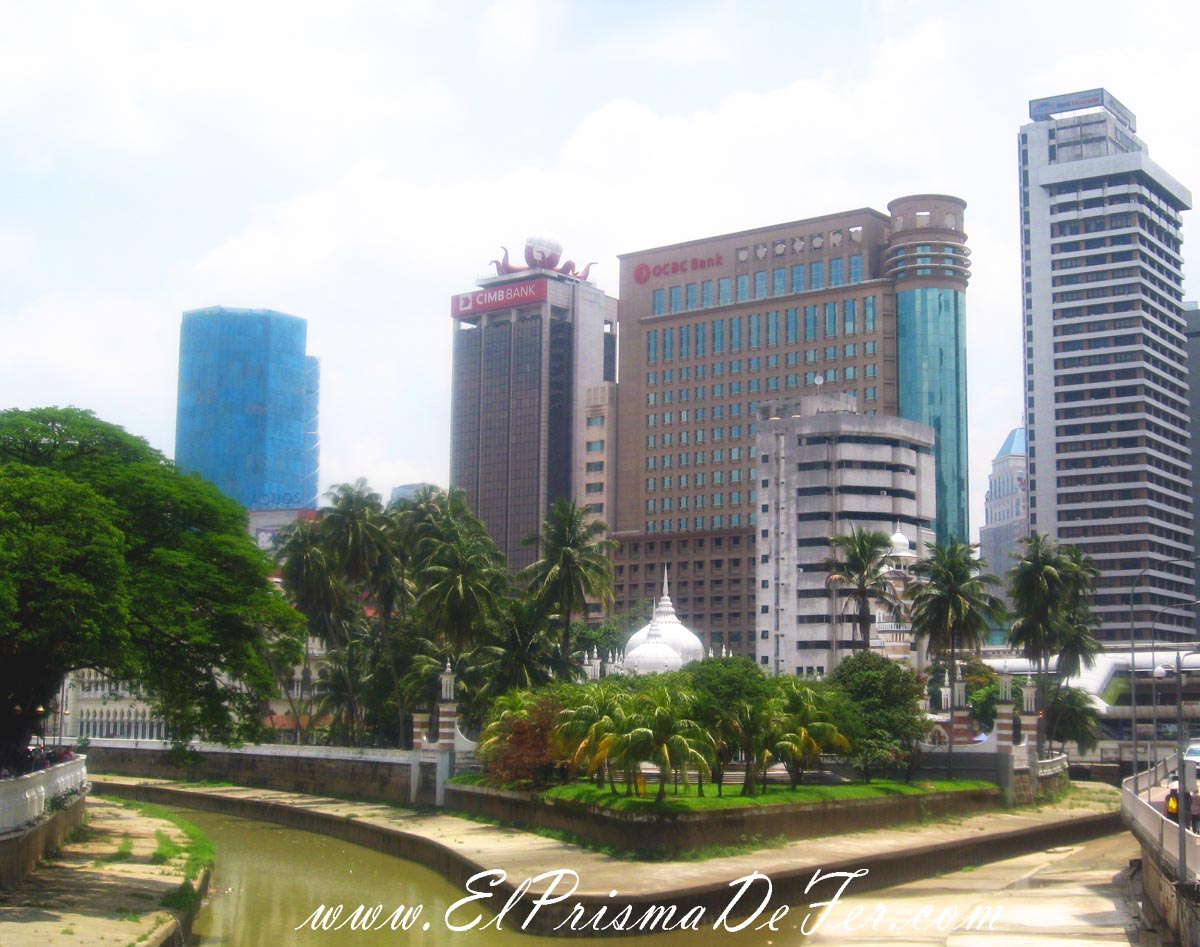
Personal thoughts on my visit to Kuala Lumpur
The capital of Malaysia is a cosmopolitan metropolis, inhabited by a mix of nationalities from all over the world. Different ethnic groups coexist in relative harmony, giving the city a vibrant and diverse character.
In addition to the predominantly Muslim Malays, there are significant communities of Indians and Pakistanis who practice Hinduism, as well as people from Buddhist countries like Thailand and Myanmar. Added to this is a large population of Chinese, Europeans, and North Americans working in the financial center, creating a true multicultural cocktail that can be felt in the food, architecture, and daily life.
I was impressed by the city's beautiful Islamic architecture, which contrasts strikingly with the modernity of its skyscrapers, something I hadn't seen before on the rest of my trip.
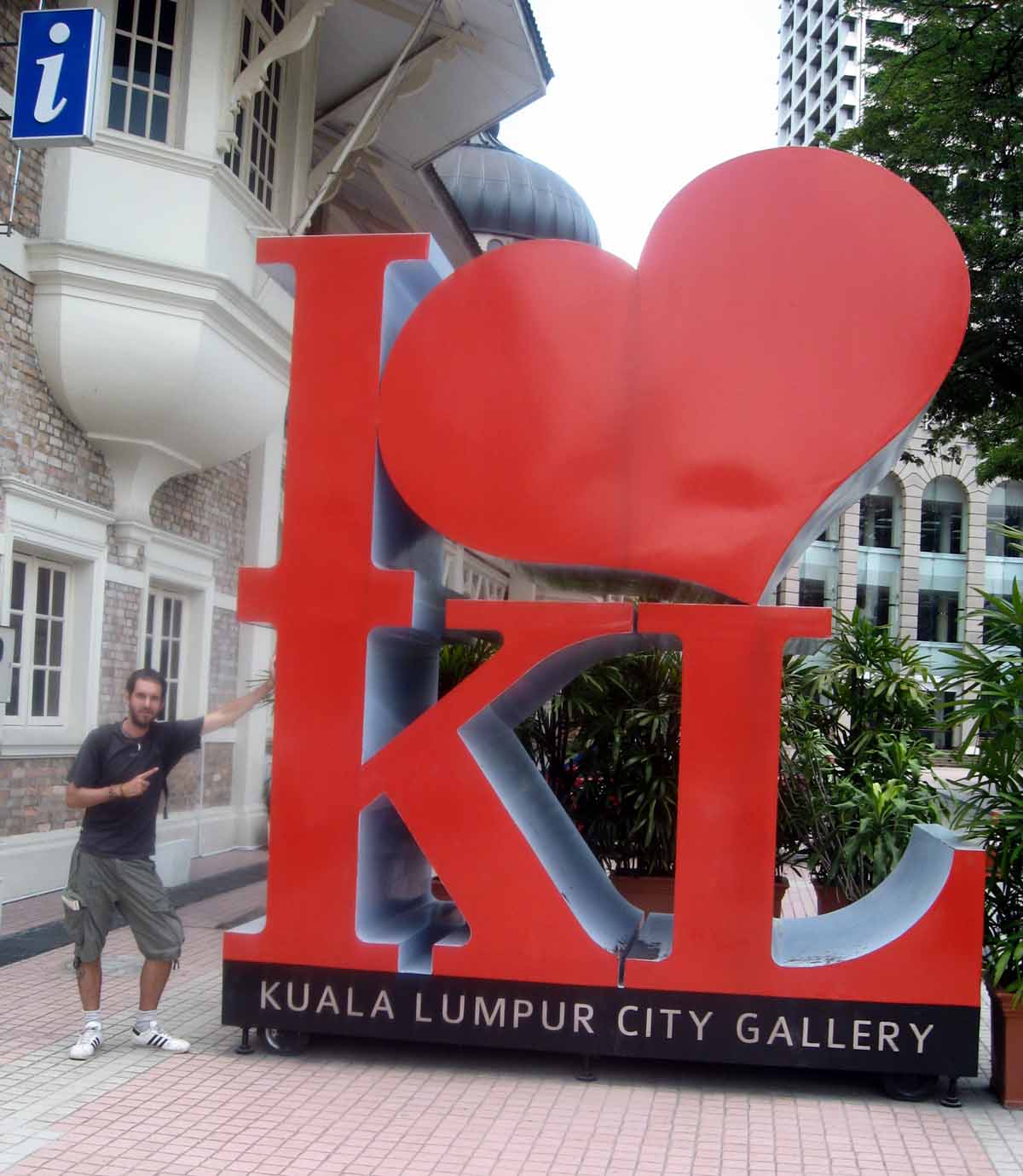
However, there is a less friendly side: poverty and inequality. In Kuala Lumpur, I noticed many people living on the streets, sleeping in alleys, or searching through garbage for food, something I hadn't seen so often in other Southeast Asian countries.
For the first time during my trip to the region, I felt a little unsafe walking at night in less crowded areas. I'm not saying the city is dangerous, but that feeling was there. I suppose that, being a more capitalist country than others in the region, inequality is more visible, something that reminds us a lot of what happens in our beloved Latin America.
Still, beyond these observations, I loved Kuala Lumpur. It's definitely on my list of favorite places, and I would go back without hesitation, to stay longer, explore the city at a leisurely pace, and, of course, admire the majestic Petronas Towers again.
Support The Prism of Fer!
Your support helps me continue creating free content on the blog. Thank you so much!

